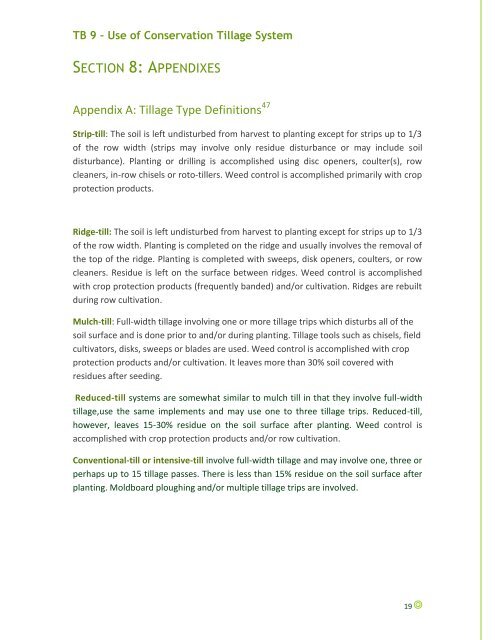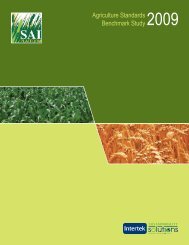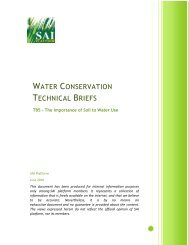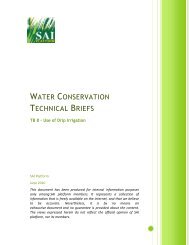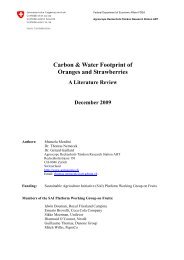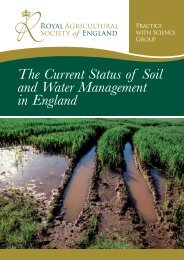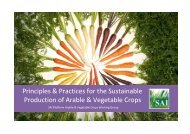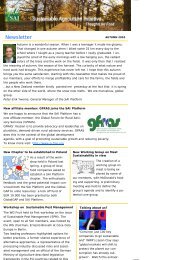Download file - SAI Platform
Download file - SAI Platform
Download file - SAI Platform
You also want an ePaper? Increase the reach of your titles
YUMPU automatically turns print PDFs into web optimized ePapers that Google loves.
TB 9 – Use of Conservation Tillage System<br />
SECTION 8: APPENDIXES<br />
Appendix A: Tillage Type Definitions 47<br />
Strip-till: The soil is left undisturbed from harvest to planting except for strips up to 1/3<br />
of the row width (strips may involve only residue disturbance or may include soil<br />
disturbance). Planting or drilling is accomplished using disc openers, coulter(s), row<br />
cleaners, in-row chisels or roto-tillers. Weed control is accomplished primarily with crop<br />
protection products.<br />
Ridge-till: The soil is left undisturbed from harvest to planting except for strips up to 1/3<br />
of the row width. Planting is completed on the ridge and usually involves the removal of<br />
the top of the ridge. Planting is completed with sweeps, disk openers, coulters, or row<br />
cleaners. Residue is left on the surface between ridges. Weed control is accomplished<br />
with crop protection products (frequently banded) and/or cultivation. Ridges are rebuilt<br />
during row cultivation.<br />
Mulch-till: Full-width tillage involving one or more tillage trips which disturbs all of the<br />
soil surface and is done prior to and/or during planting. Tillage tools such as chisels, field<br />
cultivators, disks, sweeps or blades are used. Weed control is accomplished with crop<br />
protection products and/or cultivation. It leaves more than 30% soil covered with<br />
residues after seeding.<br />
Reduced-till systems are somewhat similar to mulch till in that they involve full-width<br />
tillage,use the same implements and may use one to three tillage trips. Reduced-till,<br />
however, leaves 15-30% residue on the soil surface after planting. Weed control is<br />
accomplished with crop protection products and/or row cultivation.<br />
Conventional-till or intensive-till involve full-width tillage and may involve one, three or<br />
perhaps up to 15 tillage passes. There is less than 15% residue on the soil surface after<br />
planting. Moldboard ploughing and/or multiple tillage trips are involved.<br />
19


